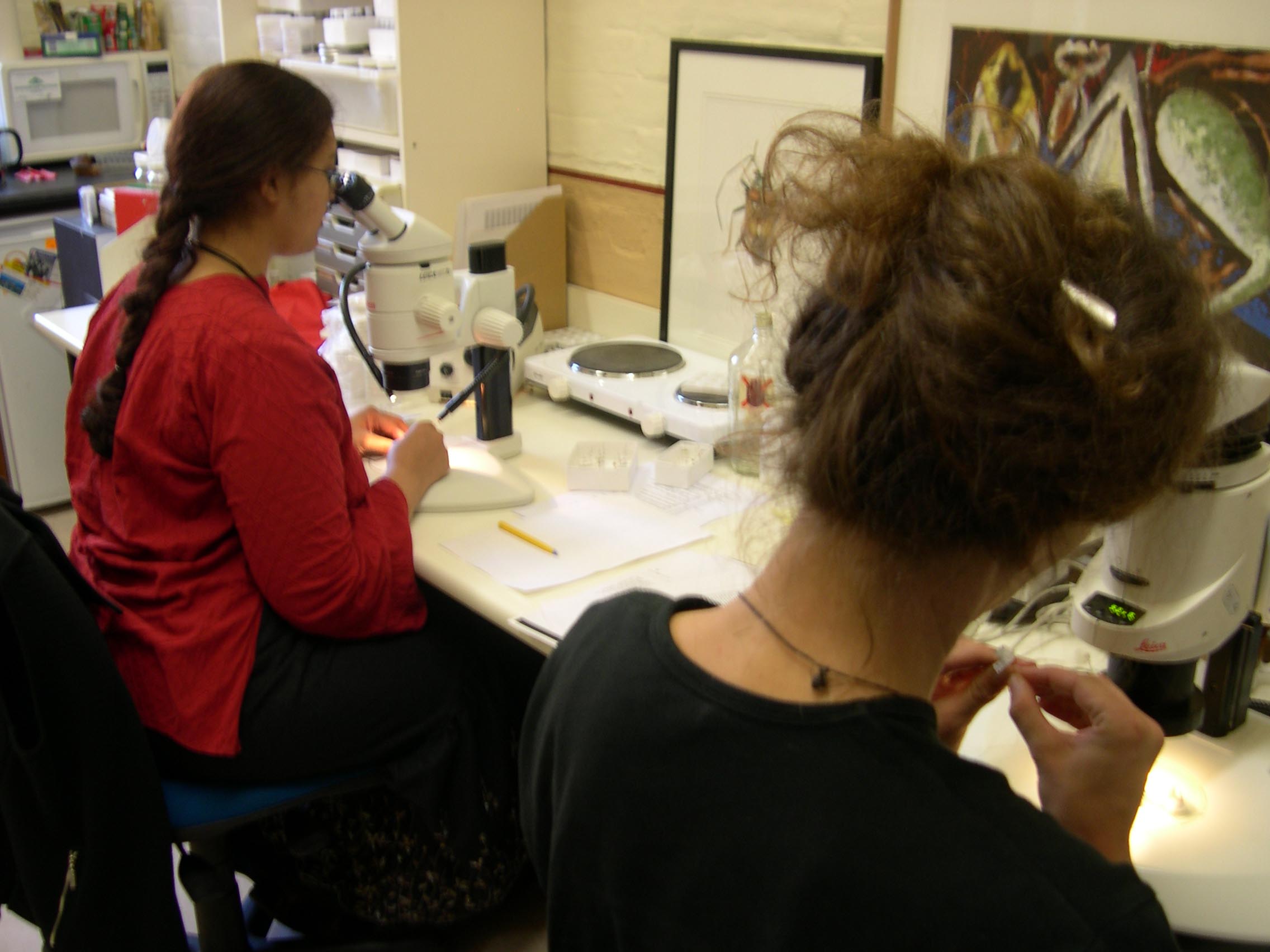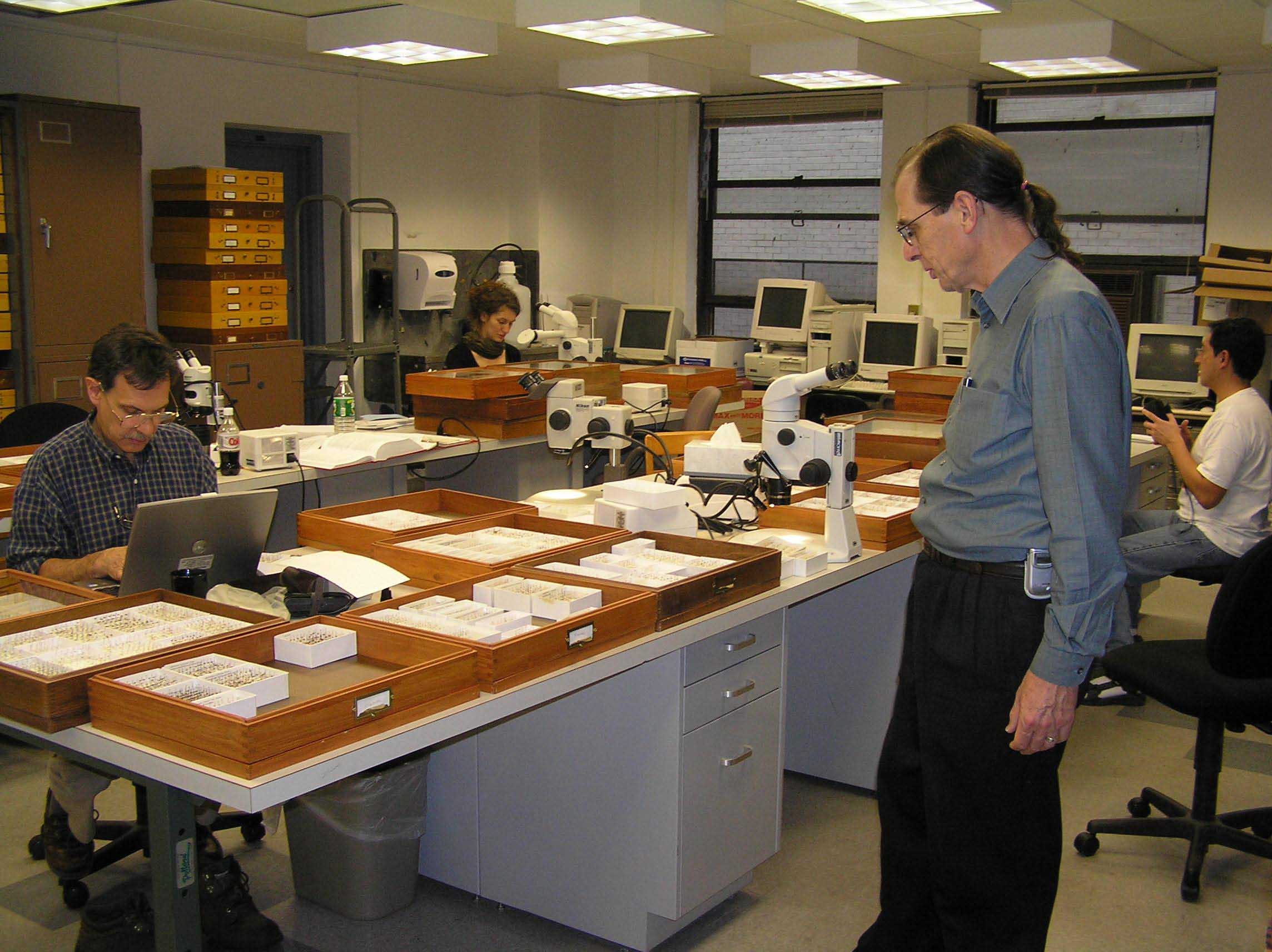As part of the training process, groups of PBI trainees and senior scientists are involved in the identification of borrowed and newly collected specimens of Miridae. During Grant Year 2 three separate approaches to identification were pursued: |

|
PBI Organizational Meeting and Training Workshop,Sydney, Australia, August 22–29, 2004 Identification of Heteropteran families: PBI trainees were given keys and representatives of approximately 80 of the 85 currently recognized families of Heteroptera. Working with senior investigators Cassis, Schuh, and Henry for one day each trainee attempted to identify these specimens to family and received feedback on the reasons for their success or failure. Identification of Miridae: PBI trainees were given keys and representatives of most recognized tribes of Miridae. Working with senior investigators Henry, Schwartz, Cassis, and Schuh for one day each trainee attempted to identify these specimens to tribe or genus and received feedback on the reasons for their success or failure. Dissection of Male and Female Genitalia: Using large screen digital displays, PBI trainees were given demonstrations on the dissection of male and female genitalia in the Miridae by PBI senior scientist Michael Schwartz. Trainees then spent one day performing dissections on a variety of specimens in order to perfect techniques and improve their understanding of genitalic morphology and nomenclature. |

|
Identification Workshop, American Museum Of Natural History, New York City, USA, January 10–21, 2005 Identification Orthotylinae and Phylinae: PBI senior scientists Schuh and Schwartz and postdoctoral trainees Weirauch and Wyniger and doctoral trainee Forero assembled in New York to sort to the level of tribe, genus, or species approximately 50,000 specimens in the collections in the American Museum of Natural History or borrowed from the collections of the University of California at Berkeley, the University of California at Riverside, the California Academy of Sciences, the John T. Polhemus Collection, Texas A&M University, the Plant Protection Research Institute, Pretoria, and the Royal Belgian Institute of Natural Sciences, Brussells. Over a period of 12 days senior scientists Schuh and Schwartz worked with trainees Forero, Weirauch, and Wyniger to sort and organize specimens of Orthotylinae and Phylinae into units ready for databasing, further identification, or incorporation into individual research projects. All units of sorted specimens were labeled to allow senior investigators to review the work of trainees and to provide feedback on errors and thereby improve skills in taxon recognition on the basis of discrete characters as well as overall appearance. |



